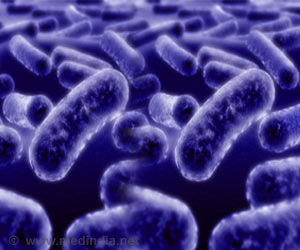A international research has now discovered a gene that is responsible for three starkly different diseases, depending on how the gene is altered.The researchers, using next-generation massive ultrasequencing techniques, have sequenced the over 20,000 genes of a Fanconi anaemia patient's genome. By adopting this strategy they have succeeded in identifying pathogenic mutations responsible for this disease in the ERCC4 gene, which had already been linked to two other rare diseases: xeroderma pigmentosum and a type of progeria. The latter are characterised by heightened sensitivity to sunlight, susceptibility to skin cancer and, in the case of progeria, premature aging. Fanconi anaemia, on the other hand, is characterised by progressive anaemia, congenital malformations and a high risk of developing leukaemia and mouth tumours. The ERCC4 gene can therefore be responsible for three different diseases.
The researchers have shown that this gene is involved in two DNA repair mechanisms by which cells maintain the stability of the genome, in such a way that the balance between these two repair systems will determine which of the three diseases the patient will contract. "This is a rather exceptional case, since there are few precedents of a single gene being involved in two independent physiological mechanisms and causing three clinically different diseases", points out UAB professor Dr Jordi Surrallés.
These findings, published today in the "American Journal of Human Genetics", as well as improving the diagnosis and genetic characterisation of rare diseases, will allow new therapeutic strategies to be applied, like gene therapy or the selection of healthy, compatible embryos to cure siblings through umbilical cord transplants. The findings add to our knowledge of the two DNA repair mechanisms, which are so important for maintaining the stability of our genes and preventing cancer in the general population. In fact, the researchers point to the importance of going on to study this gene's possible role in breast cancer and ovarian cancer.
The researchers have shown that this gene is involved in two DNA repair mechanisms by which cells maintain the stability of the genome, in such a way that the balance between these two repair systems will determine which of the three diseases the patient will contract. "This is a rather exceptional case, since there are few precedents of a single gene being involved in two independent physiological mechanisms and causing three clinically different diseases", points out UAB professor Dr Jordi Surrallés.
These findings, published today in the "American Journal of Human Genetics", as well as improving the diagnosis and genetic characterisation of rare diseases, will allow new therapeutic strategies to be applied, like gene therapy or the selection of healthy, compatible embryos to cure siblings through umbilical cord transplants. The findings add to our knowledge of the two DNA repair mechanisms, which are so important for maintaining the stability of our genes and preventing cancer in the general population. In fact, the researchers point to the importance of going on to study this gene's possible role in breast cancer and ovarian cancer.
Source:American Journal of Human Genetics














